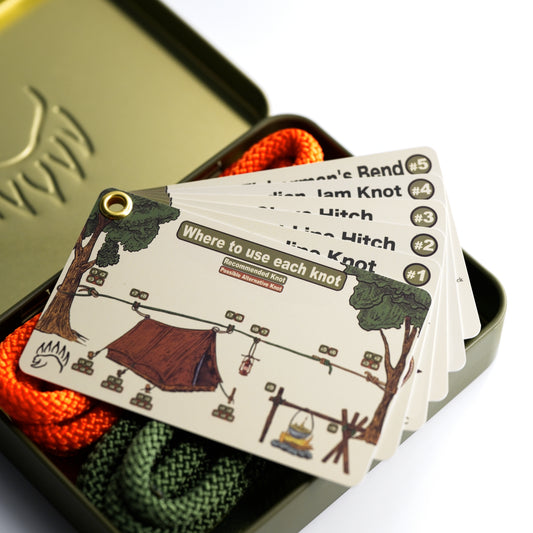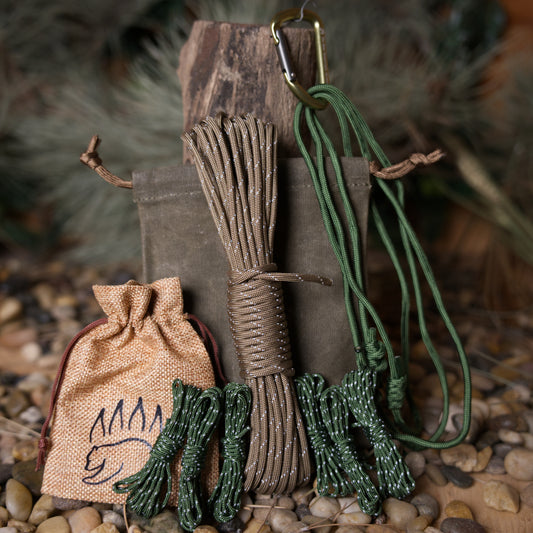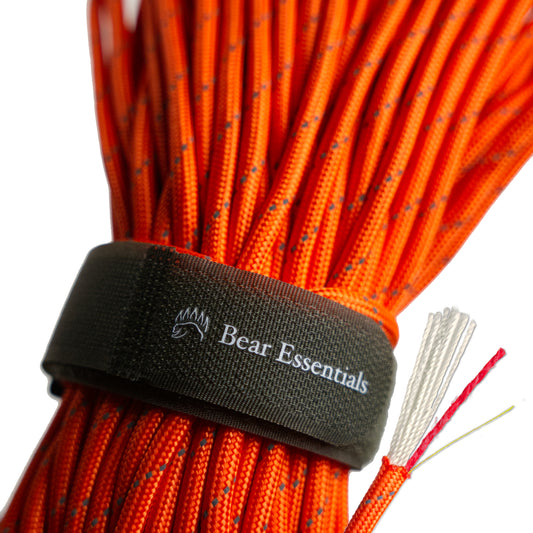How to Tie the Jam Hitch
Usage
The Jam Hitch is commonly used as a replacement for a zip-tie and to constrict and secure bundles, such as sticks or gear, in camping and bushcraft settings, functioning as a binding knot. Unlike the standard Taut-Line Hitch, which is adjustable for tensioning guylines, the Jam Hitch is tied with wraps on the outside of the working line, turning it into a constricting knot that locks tightly under load.
Why Learn the Jam Hitch?
Its constricting design ensures a tight, secure hold. This knot is a practical choice for outdoor enthusiasts needing to bind or compress loads.
Common Uses
-
Camping:
- Bind bundles of firewood or gear for transport.
- Secure tarps or shelters to stakes with a tight hold.
-
Bushcraft:
- Compress bedrolls or tarps for compact storage.
- Tie makeshift shelters by binding poles or branches.
-
Utility:
- Replaces common Zip-Ties.
- Bind cords or ropes for temporary workshop setups.
ABOK Number
(Ashley Book of Knots)
Other Names
Category
|
Notable Features
- Tight grip: Constricts bundles firmly, preventing slippage.
- Easy to tie: Simple variation of the Taut-Line Hitch, quick to learn.
- Versatile use: Suits camping, bushcraft, and utility binding tasks.
- Compact knot: Uses minimal rope for efficient securing.
- Reliable hold: Locks under tension, ideal for temporary setups.
Variations
(No variations mentioned; section left blank.)
Similar Knots
Taut-Line Hitch vs. Jam Hitch
- Pros: Adjustable for tensioning guylines, easier to untie.
- Cons: Less constricting, not designed for binding bundles.
Canadian Jam Knot vs. Jam Hitch
- Pros: Highly secure for binding with a stopper knot such as the Ashley stopper knot, widely used in bushcraft.
- Cons: Harder to untie after heavy tension compared to the Jam Hitch.
Constrictor Knot vs. Jam Hitch
- Pros: Extremely tight grip for permanent binding.
- Cons: Jams tightly, less adjustable than the Jam Hitch.
History
The Jam Hitch, a variation of the Taut-Line Hitch, likely evolved from maritime and outdoor practices where constricting knots were needed to secure bundles or loads. Referenced in The Ashley Book of Knots (#1727) as part of the Taut-Line Hitch family, its jamming adaptation is noted for binding tasks. Its use in modern camping and bushcraft reflects its simplicity and effectiveness for temporary securing.
Security Level
The Jam Hitch is reliable for binding light to moderate loads, such as firewood or gear, when tied correctly, locking tightly under tension. Its constricting nature makes it more secure than the Taut-Line Hitch for bundling but less adjustable. It can be difficult to untie after heavy tension, especially with slick or stiff ropes, so care is needed for tasks requiring release.
Downsides
- Jamming risk: Can be hard to untie after heavy tension, especially with slick ropes.
- Not adjustable: Less suited for tasks needing frequent tension adjustments.
Structure
- Wrap the rope around the bundle or object, making two full turns on the outside of the standing part.
- Pass the working end under the standing part and make one wrap on the inside of the standing part.
- Tuck the working end through the loop created by the inside wrap.
- Hold the knot with one hand and pull the standing end to tighten, constricting the bundle.
- Adjust tension to ensure the knot locks firmly under load.
Pro Tip: Ensure the two outer wraps are snug to maximize constriction.
FAQ
Is the Jam Hitch strong enough for heavy loads?
It’s reliable for light to moderate loads like bundles, but not for heavy or critical tasks.
What ropes work best for the Jam Hitch?
Non-slippery ropes like nylon or polyester ensure a secure grip.
How does the Jam Hitch compare to the Canadian Jam Knot?
It’s simpler to tie but less secure and harder to untie under heavy tension.
Can the Jam Hitch be used for climbing?
No, it’s not suitable for climbing or life-support applications.
Why choose the Jam Hitch over the Constrictor Knot?
The constrictor knot comparison, It’s easier to tie and slightly less likely to jam, though less tight for permanent binding.
Important Notes on Safety
Common failure points include using slick ropes or insufficient wraps, which can cause slipping. Always verify the knot is used for appropriate tasks and correctly tied. Inspect ropes for wear or damage before tying. Ensure the outer wraps are tight to maximize constriction. Practice tying in low-risk settings to ensure proficiency.









